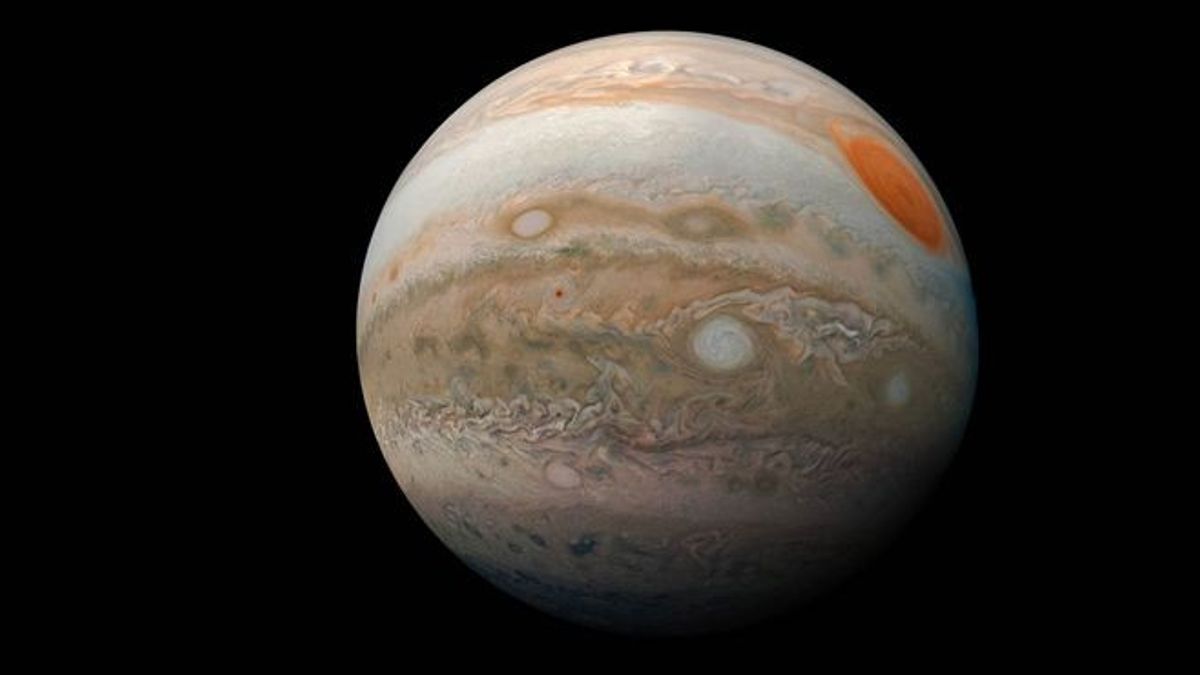JAKARTA - NASA's Hubble Telescope has just captured an all-new image of Planet Jupiter — revealing that its iconic Great Red Spot storm is accelerating in a very unique way.
Of all the planets in the Solar System, Jupiter is the most interesting planet. It is the largest planet in the Solar System, being a giant ball of gas with no solid surface, and surrounded by 79 moons. It's not a planet that humans can visit, but thanks to technology like Hubble, we can study it from afar.
In fact, Hubble has been extremely useful for this kind of exploration since its launch in 1990. Hubble helps determine the age of the universe, discovers amazing galaxies millions of light years away, and has taken seemingly endless photos along the way.
It's easy to forget that Hubble is constantly orbiting above Earth and capturing all this information, but it has been doing so for over 30 years.
As part of its latest discovery, Hubble has now shared new photos and details about Jupiter, in particular, Jupiter's Great Red Spot. The Great Red Spot is a region on Jupiter where major storms have been raging for about 340 years.
This is the largest anticyclonic storm in the entire Solar System, and according to the new Hubble image seen above, it appears that some of it is accelerating. Over the years, astronomers have determined that the inner lane of the Great Red Spot is moving faster than the outer lane. However, Hubble now reveals that the inner ring became 8 percent faster between 2009 and 2020.
Upon learning about Hubble's findings, analyst Michael Wong of the University of California, Berkeley, said, "When I first saw the results, I asked 'Does this make sense?' Nobody's ever seen this before."
Whether or not it makes sense is still up to NASA to decide, but what is certain is that the outside of the Great Red Spot is accelerating - albeit at a slower pace.
SEE ALSO:
Wong looked at data from each time Hubble observed Jupiter, used software to analyze "tens to hundreds of thousands of wind vectors," and used that data to obtain "much more consistent velocity measurements." With this data, Wong and NASA determined that the faster inner ring velocity results in an increase in velocity of >1.6Mph per Earth year.
What does this change mean? Unfortunately, it's hard to say for sure. As Wong explains, anything that lies beneath Jupiter's clouds is hidden from Hubble and "not visible in the data".
Even with that missing information, it's still an exciting discovery for the world of space and science. "This is an interesting piece of data that can help us understand what triggers the Great Red Spot and how it retains energy." That's an important thing to remember with inventions like this.
Not all new data points come with game-changing realizations, but they all serve their own purpose in one way or another. A faster storm on Jupiter may be an enigma right now, but in the next few years, it could become a key component in other missions. Regardless, it's a prime example of Hubble's prowess — and why the iconic telescope has become a key component of space exploration as a whole.
The English, Chinese, Japanese, Arabic, and French versions are automatically generated by the AI. So there may still be inaccuracies in translating, please always see Indonesian as our main language. (system supported by DigitalSiber.id)















